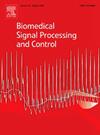基于零维心血管血流动力学参数的集成卷积神经网络用于心血管疾病早期检测
IF 4.9
2区 医学
Q1 ENGINEERING, BIOMEDICAL
引用次数: 0
摘要
这项研究解决了心血管疾病(CVD)管理中的一个关键挑战:晚期发现,通常是在晚期,可能导致高死亡风险。治疗严重心血管疾病的传统方法包括侵入性治疗,这可能会使患者感到痛苦。为了降低心血管疾病严重后果或猝死的风险,本研究引入了一种新的预测框架,将上游血压波形分析与人工智能相结合,特别是将卷积神经网络(CNN)和Rideout的零维心血管模型参数相结合。Rideout的模型确定了16个影响主动脉波的重要参数,这些参数用于训练CNN从主动脉波形预测CVD,该波形来自径向脉冲波形,使用两个传递函数。该研究确定了两个关键参数肺静脉2和系统主动脉1作为CVD指标,提出了这两个参数同时放松以促进血流顺畅的生物学相关性,从而降低了血管的阻力值。实验验证使用性能最好的CNN从PhysioNet MIMIC II数据库中的信号中获取参数值,该数据库包括4个CVD信号和19个非CVD信号,作为心血管和非心血管疾病分类的基础指标。然后使用这些指标验证来自HaeMod数据集的3365个健康信号和来自马来西亚苏丹巴希耶医院(HSB)的40个心血管疾病信号的分类。基于HSB数据,该系统对EIF和GTF传递函数的准确率分别达到80.0%和82.5%,显著增强了早期发现和及时干预,同时证明了该系统在临床环境中的实际应用潜力。本文章由计算机程序翻译,如有差异,请以英文原文为准。
An integrated convolutional neural network with zero-dimensional cardiovascular hemodynamics parameters for early cardiovascular disease detection
This study addresses a critical challenge in cardiovascular disease (CVD) management: late detection, which, often at an advanced stage, can lead to high mortality risk. Conventional approaches to severe CVD cases involve invasive treatments, which can distress patients. To mitigate risk of severe outcomes or sudden death from CVD, this research introduces a novel predictor framework, combining upstream blood pressure waveform analysis with artificial intelligence, specifically integrating a Convolutional Neural Network (CNN) and Rideout’s zero-dimensional cardiovascular model parameters. Rideout’s model identified 16 significant parameters affecting the aortic wave, which were used to train CNN for predicting CVD from aortic waveforms, derived from radial pulse waveforms using two transfer functions. The study pinpointed two critical parameters, Pulmonary Vein 2 and Systemic Aortic Artery 1, as CVD indicators, proposing a biological correlation where these parameters concurrently relax to facilitate smooth blood flow, thereby reducing blood vessels’ resistance values. Experimental validation involved using the best-performing CNN to obtain parameter values from signals in the PhysioNet MIMIC II database, which included 4 CVD and 19 non-CVD signals, serving as base indicators for classifying cardiovascular and non-cardiovascular diseases. These indicators were then used to verify the classification of 3365 healthy signals from the HaeMod dataset and 40 CVD signals collected from Hospital Sultanah Bahiyah (HSB), Malaysia. The system achieved 80.0% and 82.5% accuracy for EIF and GTF transfer functions respectively, based on HSB data, significantly enhancing early detection and offering timely intervention, while proving the potential for practical application of the system in clinical settings.
求助全文
通过发布文献求助,成功后即可免费获取论文全文。
去求助
来源期刊

Biomedical Signal Processing and Control
工程技术-工程:生物医学
CiteScore
9.80
自引率
13.70%
发文量
822
审稿时长
4 months
期刊介绍:
Biomedical Signal Processing and Control aims to provide a cross-disciplinary international forum for the interchange of information on research in the measurement and analysis of signals and images in clinical medicine and the biological sciences. Emphasis is placed on contributions dealing with the practical, applications-led research on the use of methods and devices in clinical diagnosis, patient monitoring and management.
Biomedical Signal Processing and Control reflects the main areas in which these methods are being used and developed at the interface of both engineering and clinical science. The scope of the journal is defined to include relevant review papers, technical notes, short communications and letters. Tutorial papers and special issues will also be published.
 求助内容:
求助内容: 应助结果提醒方式:
应助结果提醒方式:


